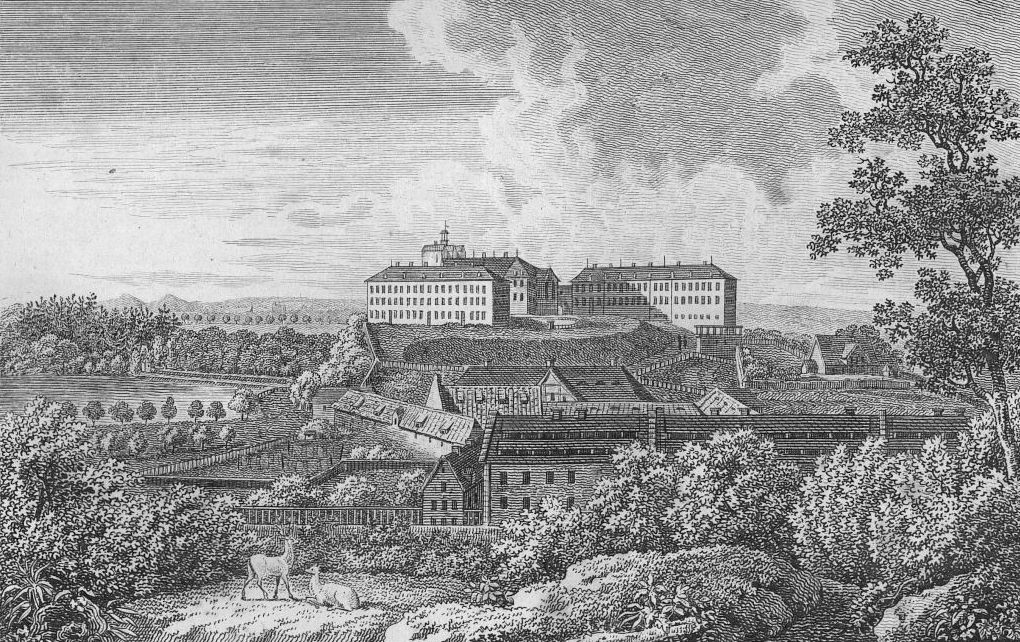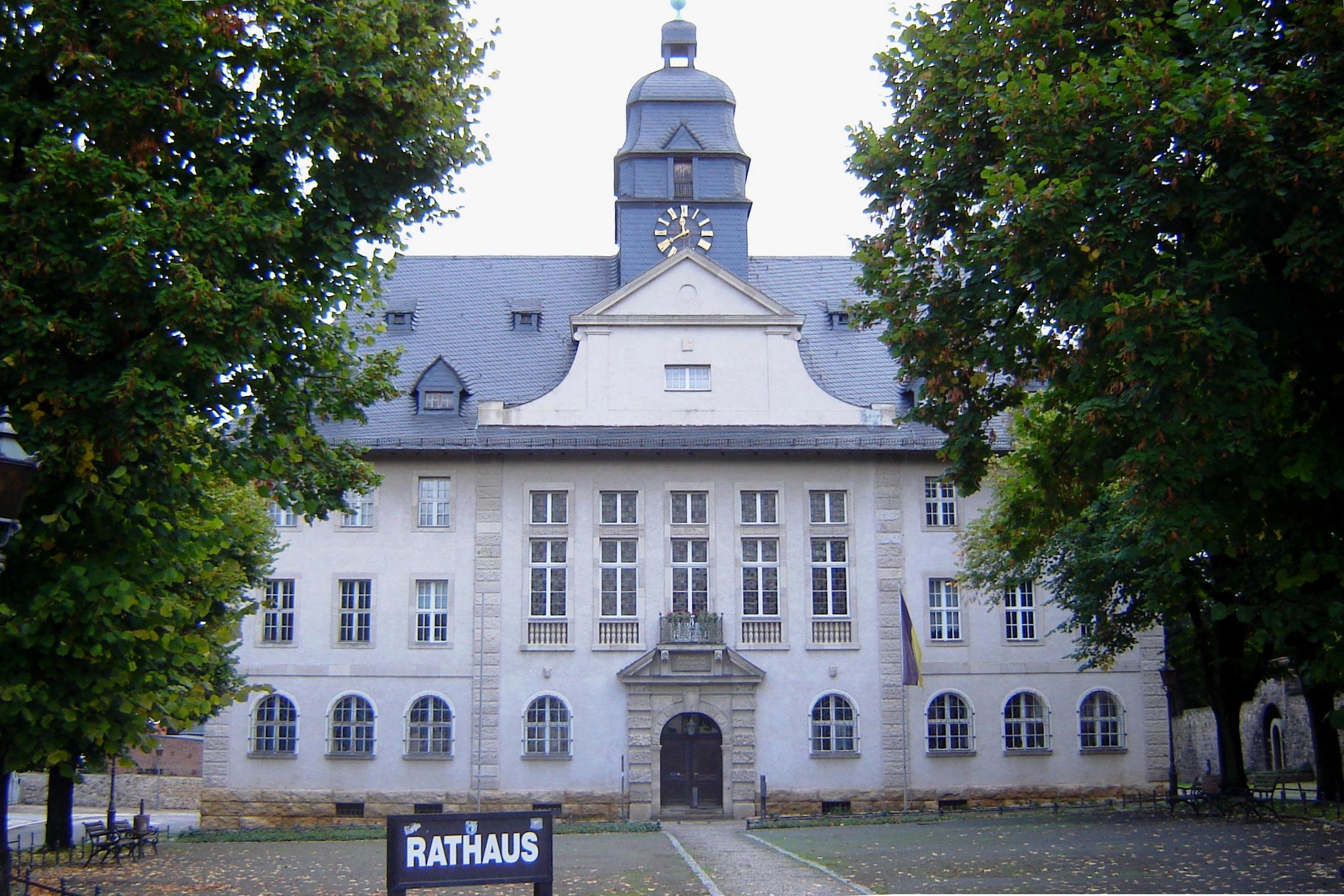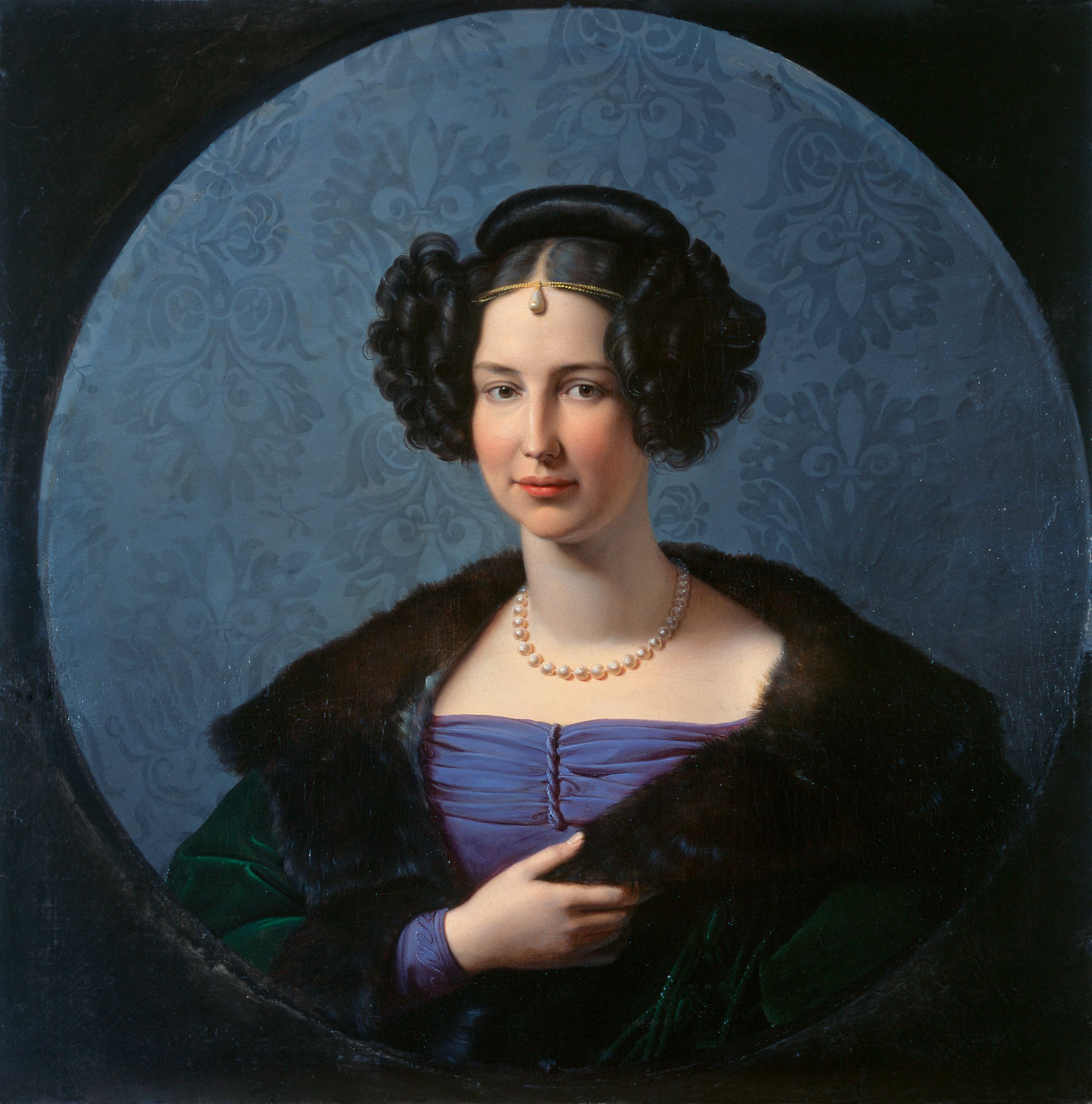Ballenstedt on:
[Wikipedia]
[Google]
[Amazon]
Ballenstedt is a town in the Harz district, in the German state of
 The Saxon count Esico of Ballenstedt (c. 1000–1059/60) was mentioned in a 1030 entry in the medieval chronicles of the Annalista Saxo and in a 1036 deed issued by Emperor Conrad II. He was a son of one Count Adalbert, who held the office of a '' Vogt'' of
The Saxon count Esico of Ballenstedt (c. 1000–1059/60) was mentioned in a 1030 entry in the medieval chronicles of the Annalista Saxo and in a 1036 deed issued by Emperor Conrad II. He was a son of one Count Adalbert, who held the office of a '' Vogt'' of  After the war, the town and the former monastery were rebuilt as a Baroque summer residence by the Ascanian princes of Anhalt-Bernburg. In 1765 the enlightened prince Frederick Albert completely moved his residence from
After the war, the town and the former monastery were rebuilt as a Baroque summer residence by the Ascanian princes of Anhalt-Bernburg. In 1765 the enlightened prince Frederick Albert completely moved his residence from
 Seats in the municipal assembly () as of 2004 elections:
* Christian Democratic Union: 8 (41.2%)
* The Left: 4 (18.2%)
*
Seats in the municipal assembly () as of 2004 elections:
* Christian Democratic Union: 8 (41.2%)
* The Left: 4 (18.2%)
*
 * Ballenstedt Castle: Baroque three-winged building, renovated in the 18th century, grave of Albert the Bear
* Castle Park: created by
* Ballenstedt Castle: Baroque three-winged building, renovated in the 18th century, grave of Albert the Bear
* Castle Park: created by
 * Princess Louise of Anhalt-Bernburg (1799-1882), Princess of Prussia
* Gustav Strube (1867-1953), composer
* Wilhelm von Krosigk (1871-1953), officer of Imperial Navy, ship commander, Rear Admiral
* Wilhelm Thiele (1897-1990), politician (NSDAP)
* Princess Marie-Auguste of Anhalt (1898-1983), Princess
*
* Princess Louise of Anhalt-Bernburg (1799-1882), Princess of Prussia
* Gustav Strube (1867-1953), composer
* Wilhelm von Krosigk (1871-1953), officer of Imperial Navy, ship commander, Rear Admiral
* Wilhelm Thiele (1897-1990), politician (NSDAP)
* Princess Marie-Auguste of Anhalt (1898-1983), Princess
*
Ballenstedt-Blog.de (german)
Ballenstedt-Blog.de (english)
{{Authority control Towns in the Harz Harz (district) Duchy of Anhalt 1030s establishments in the Holy Roman Empire 1030 establishments in Europe Populated places established in the 11th century
Saxony-Anhalt
Saxony-Anhalt (german: Sachsen-Anhalt ; nds, Sassen-Anholt) is a state of Germany, bordering the states of Brandenburg, Saxony, Thuringia and Lower Saxony. It covers an area of
and has a population of 2.18 million inhabitants, making it th ...
.
Geography
It is situated at the northern rim of theHarz
The Harz () is a highland area in northern Germany. It has the highest elevations for that region, and its rugged terrain extends across parts of Lower Saxony, Saxony-Anhalt, and Thuringia. The name ''Harz'' derives from the Middle High German ...
mountain range, about 10 km (6 mi) southeast of Quedlinburg
Quedlinburg () is a town situated just north of the Harz mountains, in the district of Harz in the west of Saxony-Anhalt, Germany. As an influential and prosperous trading centre during the early Middle Ages, Quedlinburg became a center of in ...
. The municipal area comprises the villages of Asmusstedt, Badeborn, Opperode, Radisleben, and Rieder. Ballenstedt is a stop on the scenic Romanesque Road
The Romanesque Road (german: Straße der Romanik) is a scenic route in the German state of Saxony-Anhalt in central-east Germany. It is part of the Transromanica network, a major European Cultural Route since 2006.
Route
The route takes th ...
.
History
Nienburg Abbey
Nienburg Abbey (german: Kloster Nienburg) was a Benedictine monastery in Nienburg in Saxony-Anhalt, Germany.
History
Abbey
Nienburg was for centuries on the extreme eastern edge of the settled territory of Germany. With the aim of converting ...
, and Hidda, a daughter of Margrave Odo I of the Saxon Ostmark. Esico, whose sister Uta married Margrave Eckard II of Meissen is considered the progenitor of the House of Ascania
The House of Ascania (german: Askanier) was a dynasty of German rulers. It is also known as the House of Anhalt, which refers to its longest-held possession, Anhalt.
The Ascanians are named after Ascania (or Ascaria) Castle, known as ''Schlo ...
. He had a collegiate church In Christianity, a collegiate church is a church where the daily office of worship is maintained by a college of canons: a non-monastic or "secular" community of clergy, organised as a self-governing corporate body, which may be presided over by ...
erected in Ballenstedt, dedicated to Saints Pancras and Abundius
Abundius (also Abondius, Abundias, or Abbondio; early fifth century – 469), venerated in the Catholic Church as Saint Abundius, was a bishop of Como, Northern Italy.
Biography
Abundius was born at Thessalonica. Around 448 Abundius became the ...
, in the presence of Emperor Henry III in 1046.
Ballenstedt church was mentioned in a charter of 1073 by Henry IV in which the emperor confirmed to the church the possession of 21 ''mansi'' previously granted by his father Henry III. In 1123 Otto the Rich together with his son Albert the Bear, who would become the first ruler of Brandenburg
Brandenburg (; nds, Brannenborg; dsb, Bramborska ) is a state in the northeast of Germany bordering the states of Mecklenburg-Vorpommern, Lower Saxony, Saxony-Anhalt, and Saxony, as well as the country of Poland. With an area of 29,480 sq ...
, established a Benedictine
, image = Medalla San Benito.PNG
, caption = Design on the obverse side of the Saint Benedict Medal
, abbreviation = OSB
, formation =
, motto = (English: 'Pray and Work')
, foun ...
monastery at the site. Albert and was buried at the crypt of the abbey church in 1070; a monument for him is located in the town's park. Albert's grandson Henry I Henry I may refer to:
876–1366
* Henry I the Fowler, King of Germany (876–936)
* Henry I, Duke of Bavaria (died 955)
* Henry I of Austria, Margrave of Austria (died 1018)
* Henry I of France (1008–1060)
* Henry I the Long, Margrave of the ...
became the first Prince of Anhalt in 1218.
In 1512 the citizens of Ballenstedt were vested with brewing rights by the Ascanian prince Wolfgang of Anhalt-Köthen. After Wolfgang met with Martin Luther
Martin Luther (; ; 10 November 1483 – 18 February 1546) was a German priest, theologian, author, hymnwriter, and professor, and Augustinian friar. He is the seminal figure of the Protestant Reformation and the namesake of Lutherani ...
at the 1521 Diet of Worms, he became one of the first Protestant
Protestantism is a branch of Christianity that follows the theological tenets of the Protestant Reformation, a movement that began seeking to reform the Catholic Church from within in the 16th century against what its followers perceived to b ...
rulers in the Holy Roman Empire
The Holy Roman Empire was a political entity in Western, Central, and Southern Europe that developed during the Early Middle Ages and continued until its dissolution in 1806 during the Napoleonic Wars.
From the accession of Otto I in 962 ...
. Ballenstedt Abbey was stormed and plundered during the German Peasants' War, whereafter Prince Wolfgang had the monastery secularised
In sociology, secularization (or secularisation) is the transformation of a society from close identification with religious values and institutions toward non-religious values and secular institutions. The ''secularization thesis'' expresses the ...
in 1525. He chose Ballenstedt as a residence and granted it town privileges
Town privileges or borough rights were important features of European towns during most of the second millennium. The city law customary in Central Europe probably dates back to Italian models, which in turn were oriented towards the traditio ...
in 1543. It received city walls in 1551; a town hall was first mentioned in 1582. As the Anhalt princes supported King Christian IV of Denmark
Christian IV (12 April 1577 – 28 February 1648) was King of Denmark and Norway and Duke of Holstein and Schleswig from 1588 until his death in 1648. His reign of 59 years, 330 days is the longest of Danish monarchs and Scandinavian mon ...
during the Thirty Years' War
The Thirty Years' War was one of the longest and most destructive conflicts in European history, lasting from 1618 to 1648. Fought primarily in Central Europe, an estimated 4.5 to 8 million soldiers and civilians died as a result of battle ...
, Ballenstedt was raided and plundered by Imperial troops under Albrecht von Wallenstein
Albrecht Wenzel Eusebius von Wallenstein () (24 September 1583 – 25 February 1634), also von Waldstein ( cs, Albrecht Václav Eusebius z Valdštejna), was a Bohemian military leader and statesman who fought on the Catholic side during the Th ...
in 1626.
 After the war, the town and the former monastery were rebuilt as a Baroque summer residence by the Ascanian princes of Anhalt-Bernburg. In 1765 the enlightened prince Frederick Albert completely moved his residence from
After the war, the town and the former monastery were rebuilt as a Baroque summer residence by the Ascanian princes of Anhalt-Bernburg. In 1765 the enlightened prince Frederick Albert completely moved his residence from Bernburg
Bernburg (Saale) is a town in Saxony-Anhalt, Germany, capital of the Salzlandkreis district. The former residence of the Anhalt-Bernburg princes is known for its Renaissance castle.
Geography
The town centre is situated in the fertile Magdeburg ...
to Ballenstedt Castle and induced a time of prosperity, including the erection of a castle theatre in 1788, the oldest theatre in Saxony-Anhalt and the domain of composers like Albert Lortzing
Gustav Albert Lortzing (23 October 1801 – 21 January 1851) was a German composer, librettist, actor and singer. He is considered to be the main representative of the German ''Spieloper'', a form similar to the French ''opéra comique'', which ...
and Franz Liszt.
A part of the re-unified Duchy of Anhalt
The Duchy of Anhalt (german: Herzogtum Anhalt) was a historical German duchy. The duchy was located between the Harz Mountains in the west and the river Elbe and beyond to the Fläming Heath in the east. The territory was once ruled by the House ...
from 1863 on, Ballenstedt became known as a residential town for the well-to-do retired like Princess Friederike of Schleswig-Holstein-Sonderburg-Glücksburg, who died at Ballenstedt Castle in 1902, or the painter and author Wilhelm von Kügelgen, whose house is now a museum.
Politics
Free Voters
Free Voters (german: Freie Wähler, FW or FWG) in Germany may belong to an association of people which participates in an election without having the status of a registered political party. Usually it involves a locally organized group of voters ...
: 3 (12.6%)
* Free Democratic Party: 3 (12.5%)
* Social Democratic Party of Germany: 1 (7.5%)
*Independent: 1 (5.4%)
The coat of arms is derived from the insignia of the Counts of Ballenstedt, which is also the origin of the coat of arms of Saxony
The coat of arms of the present-day German free state of Saxony shows a tenfold horizontally-partitioned (''Barry of ten'') field of black (''sable'') and gold/yellow ('' or'') stripes,
. It was first manifested in 1560 after Ballenstedt received town rights.
Places of interest
 * Ballenstedt Castle: Baroque three-winged building, renovated in the 18th century, grave of Albert the Bear
* Castle Park: created by
* Ballenstedt Castle: Baroque three-winged building, renovated in the 18th century, grave of Albert the Bear
* Castle Park: created by Peter Joseph Lenné
Peter Joseph Lenné (the Younger) (29 September 1789 – 23 January 1866) was a Prussian gardener and landscape architect. As director general of the Royal Prussian palaces and parks in Potsdam and Berlin, his work shaped the development of 19 ...
; castle and castle park belong to the Saxony-Anhalt Garden Dreams project
* Ballenstedt Castle Theatre: played by Albert Lortzing
Gustav Albert Lortzing (23 October 1801 – 21 January 1851) was a German composer, librettist, actor and singer. He is considered to be the main representative of the German ''Spieloper'', a form similar to the French ''opéra comique'', which ...
and Franz Liszt
* Großer Gasthof castle hotel: originally built in 1733 as an armoury, converted in 1756 by the Brunswick-Wolfenbüttel ducal master builder, Martin Peltier de Belfort, into a guest house
* Local History Museum, opposite the Großer Gasthof in the upper part of the avenue
* Kügelgen House, Kügelgenstr. 35a
* Yellow House (''Gelbes Haus''), on the exit to the town towards Rieder, built as a roadside toll house
* Allee: representative, a kilometre long approach to the castle, centre point of the town
* Old Town Hall (''Altes Rathaus''): timber-framed building erected in 1683
* New Town Hall (''Neues Rathaus''): representative building, built in 1906 based on a design by Berlin architect Alfred Messel
* St. Nicholas' Church: Late Gothic church, built in 1326, burnt down in 1498, rebuilt in 1501
* Town wall, can still be seen in ''Wallstraße''
* Wall towers along the town wall (Oberturm, Unterturm, Marktturm – the latter is accessible, key in the restaurant opposite)
* Swimming baths, built 1907-08
* Teufelsmauer (Harz)
The Teufelsmauer (''Devil's Wall'') is a rock formation made of hard sandstones of the Upper Cretaceous in the northern part of the Harz Foreland in central Germany. This wall of rock runs from Blankenburg (Harz) via Weddersleben and Rieder ...
* Gegensteine
The Gegensteine are crags near the town of Ballenstedt on the northern edge of the Harz Mountains in Germany. There are two: the Großer Gegenstein and Kleiner Gegenstein ("Great Gegenstein" and "Little Gegenstein"). They are striking, free-standin ...
nature reserve
* Bismarck Tower, Opperode
* Roseburg (castle)
* Oberhof Ballenstedt
Transport
Ballenstedt is located at the ''Bundesstraße
''Bundesstraße'' (German for "federal highway"), abbreviated ''B'', is the denotation for German and Austrian national highways.
Germany
Germany's ''Bundesstraßen'' network has a total length of about 40,000 km.
German ''Bundesstraßen'' ...
'' (federal highway) 185, leading to the ''Bundesstraße 6'' and the '' Bundesautobahn 14''. Train service was suspended in 2003. A small asphalt runway is about 5 km (3 mi) outside the town.
Notable people
Born in Ballenstedt
* Uta von Ballenstedt (1000 - before 1046), founder of theNaumburg Cathedral Naumburg Cathedral (german: Naumburger Dom St. Peter und St. Paul, ), located in Naumburg, Germany, is the former cathedral of the Bishopric of Naumburg-Zeitz. The church building, most of which dates back to the 13th century, is a renowned landmark ...
* Johann Arndt
Johann Arndt (or Arnd; 27 December 155511 May 1621) was a German Lutheran theologian who wrote several influential books of devotional Christianity. Although reflective of the period of Lutheran Orthodoxy, he is seen as a forerunner of Pietism, a ...
(1555-1621), theologian
* Pauline zur Lippe (1769-1820), regent of the Principality of Lippe
* Caroline Bardua (1781-1864), painter
 * Princess Louise of Anhalt-Bernburg (1799-1882), Princess of Prussia
* Gustav Strube (1867-1953), composer
* Wilhelm von Krosigk (1871-1953), officer of Imperial Navy, ship commander, Rear Admiral
* Wilhelm Thiele (1897-1990), politician (NSDAP)
* Princess Marie-Auguste of Anhalt (1898-1983), Princess
*
* Princess Louise of Anhalt-Bernburg (1799-1882), Princess of Prussia
* Gustav Strube (1867-1953), composer
* Wilhelm von Krosigk (1871-1953), officer of Imperial Navy, ship commander, Rear Admiral
* Wilhelm Thiele (1897-1990), politician (NSDAP)
* Princess Marie-Auguste of Anhalt (1898-1983), Princess
* Eduard, Prince of Anhalt
Eduard Julius Ernst August Erdmann, Prince von Anhalt (german: Eduard Julius Ernst August von Anhalt; born 3 December 1941), usually referred to as Prince Eduard, is the head of the House of Ascania, the family which ruled the Duchy of Anhalt unt ...
(born 1941), since 1963 head of the house Anhalt-Ascania
* Justus Pfaue
Justus Pfaue (25 September 1942 – 8 March 2014)
t-online.de, retrieved 15 March ...
(1942-2014), novelist and screenwriter
* Eckhard Lesse (born 1948), long-distance runner
t-online.de, retrieved 15 March ...
Died in Ballenstedt
* Karl Christian Agthe, composer, born 16 June 1762 in Hettstedt, died 27 November 1797 * Wilhelm von Kügelgen, painter, born 20 November 1802 inSaint Petersburg
Saint Petersburg ( rus, links=no, Санкт-Петербург, a=Ru-Sankt Peterburg Leningrad Petrograd Piter.ogg, r=Sankt-Peterburg, p=ˈsankt pʲɪtʲɪrˈburk), formerly known as Petrograd (1914–1924) and later Leningrad (1924–1991), i ...
, died 25 May 1867
* Wilhelm Vöge, art historian, born 16 February 1868 in Bremen, died 30 December 1952.
Twin towns
*Kronberg im Taunus
Kronberg im Taunus is a town in the Hochtaunuskreis district, Hesse, Germany and part of the Frankfurt Rhein-Main urban area. Before 1866, it was in the Duchy of Nassau; in that year the whole Duchy was absorbed into Prussia. Kronberg lies at th ...
, Germany
References
External links
*Ballenstedt-Blog.de (german)
Ballenstedt-Blog.de (english)
{{Authority control Towns in the Harz Harz (district) Duchy of Anhalt 1030s establishments in the Holy Roman Empire 1030 establishments in Europe Populated places established in the 11th century